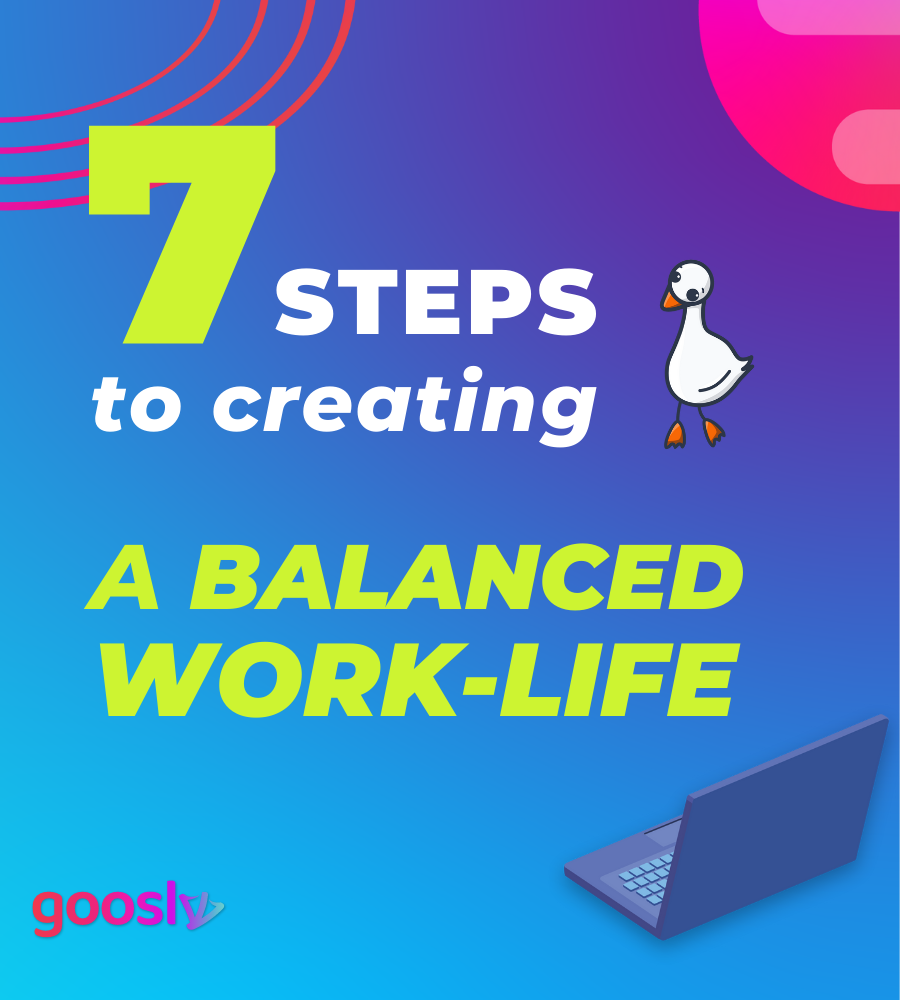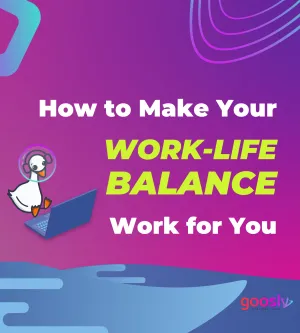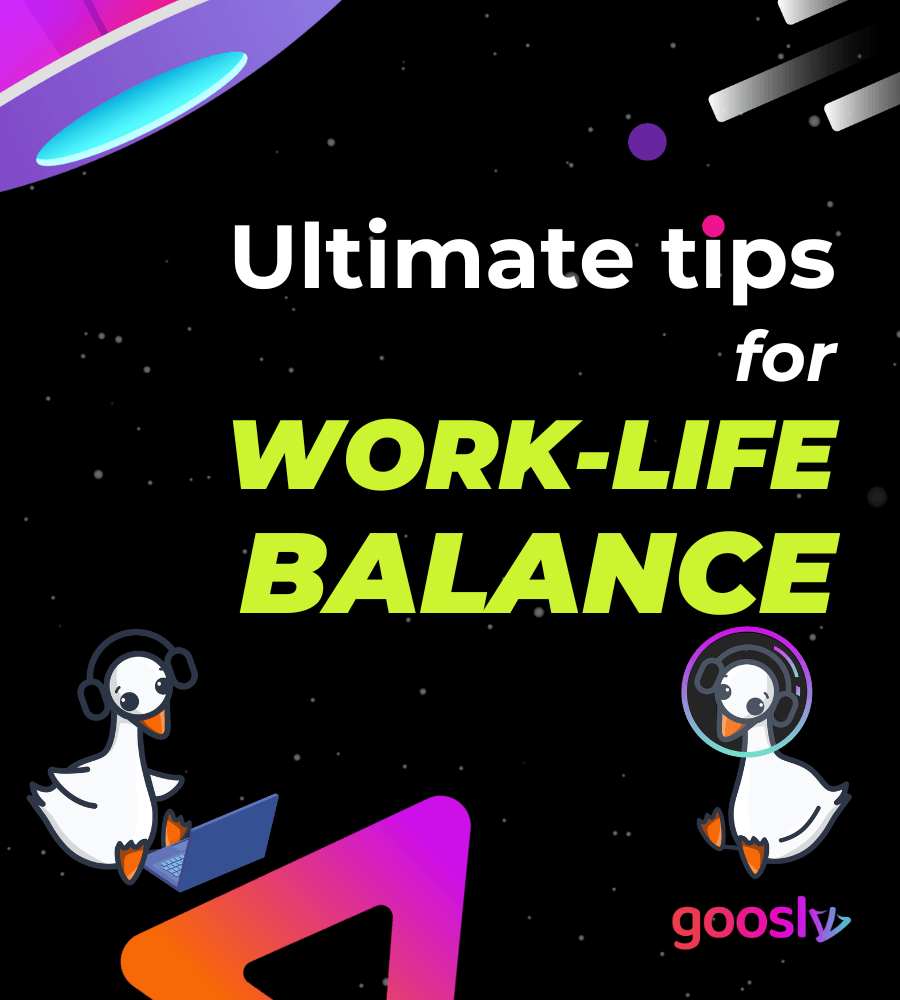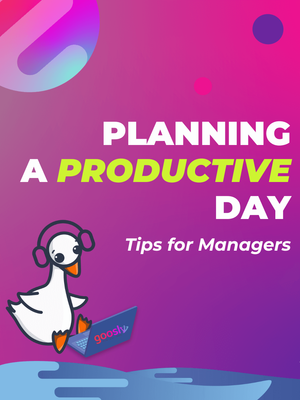What you'll get from this article:
1. Tips for finding a good work-life balance
2. How to create a schedule for personal and professional lives
We all strive for a healthy work-life balance. But sometimes it feels impossible to achieve with so many demands on our time. Technology has made it possible to be constantly "on" and connected, but this comes at a cost. We're continually juggling work emails, calls, and tasks with our personal time - never really taking a break. This can lead to burnout and stress. So how do we find balance? Try following these 7 steps from Goosly.

1. Make a schedule and stick to it
There are many ways to make a schedule and stick to it. One popular technique is to use a calendar, to-do list, or planner to map out your day-by-day. This can help you visualize what you need to do and when and can help keep you organized. Another approach is to create a list of daily priorities and try to complete as many items on the list as possible. This can help you avoid a poor work-life balance.
Goosly's free roadmaps tool can help you plan your personal life and professional life. You can use the roadmaps to plan your work schedule, ensuring that you are working on the most critical tasks at the right time.

Whatever method you choose, be sure to tailor it to fit your own needs and preferences. And most importantly, be patient and persistent – it may take some time to find what works for you, but eventually, you will find a routine that works!
2. Set boundaries with your family and friends
There are many ways to set boundaries with your family and friends. One way is to be assertive and upfront about what you need. For example, if you don't want to be constantly bothered by your family, let them know and set specific boundaries.
Another way to set boundaries is to be more passive and indirect. For example, if you're not feeling well one day and don't want to be disturbed, try putting a sign that says, "Please do not disturb."
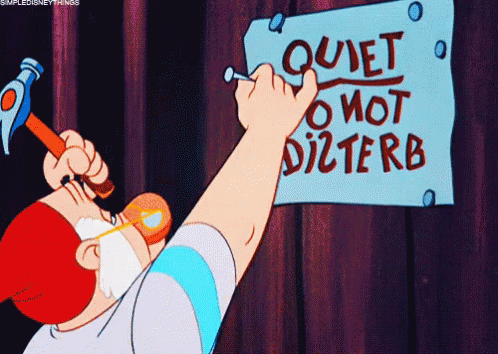
It's crucial to find a balance when setting boundaries. You don't want to be too assertive and come across as bossy or unapproachable, but you also don't want to be passive and let people walk all over you. The key is to find a healthier work-life balance that works for you and stick to it.
3. Take breaks throughout the day
It is essential to take breaks throughout the day to maintain productivity and focus. Here are a few tips for taking effective breaks:
1. Get up and move around. A quick walk around the office or outside can help refresh your mind and body.
2. Take a few deep breaths. This can help clear your head and relax your body.

3. Eat a healthy snack. Opt for something that will give you energy, such as fruits or nuts, rather than something sugary or fatty during your lunch break.
4. Drink some water. Dehydration can lead to fatigue and decreased productivity.
5. Take a nap if possible. A short rest can help you recharge and be more productive later in the day.

4. Have a designated work area
You can do a few things to ensure an effective designated work area. First, make sure the space is quiet and free of distractions. This may mean shutting the door to your office or cubicle or finding a separate room to work. If possible, try to find a space with natural light.
Second, make sure the space is organized and decluttered. This will help you focus on your work and not be distracted by messes or clutter. Finally, make sure the area is comfortable. This may mean having a comfortable chair, a desk of the right height, and proper lighting.

5. Stay organized
One great way to stay organized is to create a schedule and stick to it. Make a list of the tasks you need to do each day and try to complete as many as possible. You can also use a planner to keep track of important dates and appointments.
Staying organized will be much easier if you have a specific place for everything. Try to keep your work area and your living space clean and organized, and you'll be able to find everything you need quickly and easily.
6. Avoid working late nights
To avoid working late, you should start by setting some ground rules. Make sure you stick to them and be honest about when you're tired and need to go home. Some other tips include:
- Avoid scheduling meetings or appointments with longer hours late in the day.
- Pack up your work and head home when you know you're going to hit a wall.
- Take regular breaks throughout the day, even if it's just for five minutes.
- Get plenty of sleep and exercise off hours, which can help improve your energy level and mental health in everyday life.

7. Find a work-life balance that works for you
Finding a work-life balance that works for you can be difficult. You may feel like you are always working or at home and never have time for anything else. However, you can achieve work-life balance with a little effort.
Aside from these 7 tips, talk to your employer about flexible working arrangements. If you need to leave early for doctor's appointments or want to work from home occasionally, see if your employer is willing to accommodate these requests. Flexible work hours can help you find a better work-life balance.

Finding a proper work-life balance takes effort, but it is ultimately worth it. In sum, Goosly's public roadmaps can help plan your personal life and work projects. With a little planning and organization, you can find a balance that allows you to have a successful career and quality time outside work.

